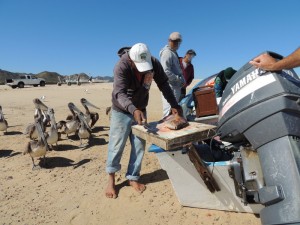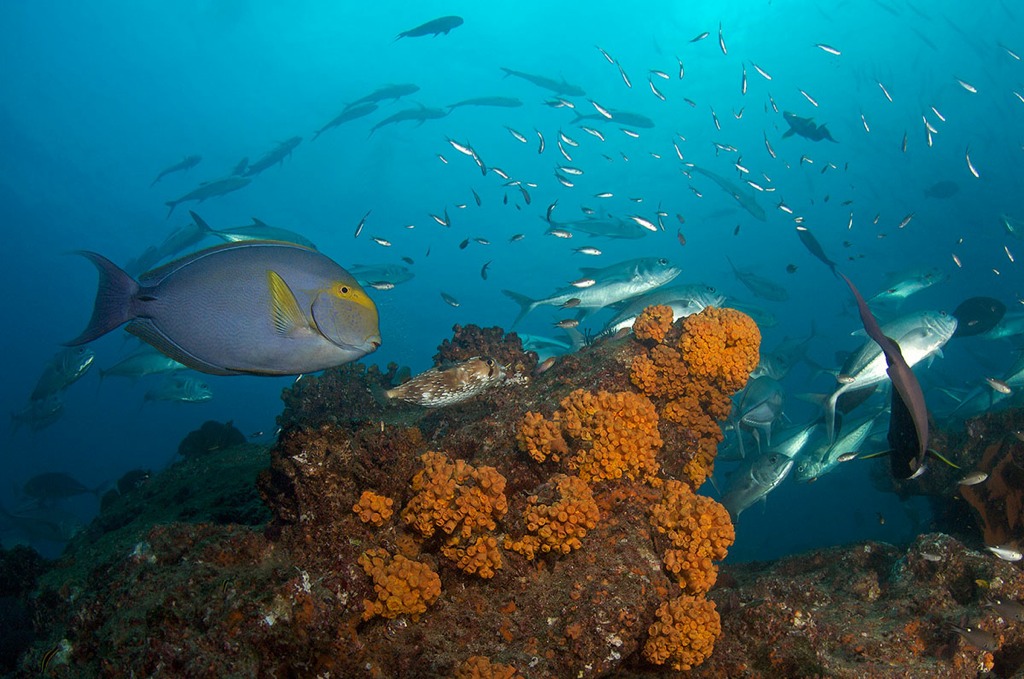Field Notes from Cabo Pulmo, January 2013

In early January 2013, we (Heather Leslie, Leila Sievanen and Mateja Nenanovic) traveled to Cabo Pulmo, on the southeastern corner of the Baja peninsula, to prepare for a series of household surveys we are conducting in the region in the coming weeks. This project, led by Heather Leslie of Brown University and Xavier Basurto of Duke University, is part of a larger NSF funded effort. The goal of this specific study is to understanding the dynamics of small scale fisheries on the gulf coast of Baja California Sur and particularly how fishermen respond to environmental change, including climatic variability, as well as institutional change, such as the establishment of protected areas.
Download the project description (in Spanish) here.
Cabo Pulmo is a town of some 100 people, and is situated between the mountains and the beach, adjacent to a national park of the same name. It is one of a handful of communities in this remote part of the Gulf coast. The park was created in 1995 because of the unique ecology of the area. The community of Cabo Pulmo, particularly members of the Castro family, and marine scientists from a nearby university (Universidad Autónoma de Baja California Sur) played an important role in the creation of the park and the continued efforts to sustain its unique ecology through active participation in park’s management. Cabo Pulmo has gained the attention of many in Mexico and the international community in the last year because of the plans to construct a mass tourism resort just north of the community and the park, that was ultimately canceled by Mexico’s President Felipe Calderón in June of 2012.
Cabo Pulmo is a conservation success. The gulf’s only coral reef is protected from fishing and other extractive activities. Populations of predatory groupers, sharks and other exploited species have rebounded. Park rules seem to be respected, and there is strong support for the park from the local to the international level. Alternative employment opportunities, particularly related to dive based tourism and sportsfishing, are available, at least for some residents.

When one digs into the data behind the statements above, one can find more support for the ecological observations than the social and economic ones. This is not unusual; conservation success is appropriately quantified by biological changes like increases in the number of fish or habitat type, shifts in the food web, etc. But in almost every case, such projects change human behavior as well as ecosystem structure and functioning.
With strong support from local collaborators, our work in the communities surrounding Cabo Pulmo National Park, as well as parks near Loreto and La Paz, to the north, will enable us to understand the dimensions of conservation success more fully. Where and how are people fishing, how are fishermen organized, and how have those patterns shifted with the park? What species are targeted and how do those patterns change within and among years, particularly with climate variability? Ecological responses to the park are an active area of research by many in the region; much less is known about associated economic, institutional and social changes.
– Heather Leslie, with contributions from Leila Sievanen & Mateja Nenanovic
This project is funded by NSF’s Coupled Natural and Human Systems Program, with additional support from Brown University’s Environmental Change Initiative and The David and Lucile Packard Foundation. Contact the Lead PI, Prof. Heather Leslie, to learn more.
